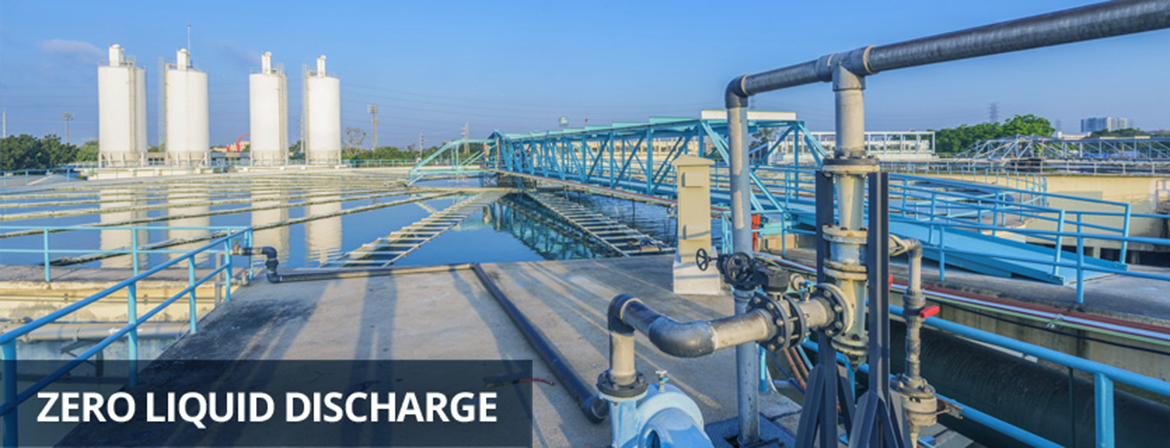
Zero Liquid Discharge (ZLD) in Wastewater Treatment: A Sustainable Solution for Water Scarcity and Pollution
Introduction
Zero Liquid Discharge (ZLD) is a concept in wastewater treatment that aims to completely eliminate the discharge of liquid effluents. This approach is crucial in addressing global issues such as water scarcity and pollution. ZLD systems treat and recover all wastewater streams, ensuring that no liquid waste is released into the environment. This conserves freshwater resources and prevents water pollution, making ZLD a sustainable and efficient solution for wastewater management.
Historical Background
Wastewater treatment has evolved over time, starting with basic methods like settling and decantation in ancient civilizations. However, it was not until the emergence of ZLD as a concept that the goal of complete liquid discharge elimination was introduced. ZLD technologies gained momentum in the late 20th century, driven by concerns over water scarcity and pollution. Various industries, including power plants, chemical manufacturing, and textile industries, began adopting ZLD systems. Since then, the focus has been on improving efficiency, reducing costs, and maximizing resource recovery.
Key Concepts and Definitions
Zero Liquid Discharge (ZLD) refers to the process of treating and recovering all wastewater streams to eliminate liquid discharge. The objective is to minimize environmental impact and conserve water resources by maximizing the reuse and recovery of wastewater. Evaporator systems play a crucial role in ZLD by removing water content from wastewater, leaving behind concentrated solids. Crystallization is another key concept, where controlled cooling or chemical processes form crystals of salts and minerals. Brine management involves proper handling and disposal of the concentrated brine generated during the ZLD process.
Main Discussion Points
ZLD Technologies and Processes
ZLD systems employ various technologies to achieve their objective. Membrane filtration, such as reverse osmosis and ultrafiltration, removes contaminants and solid particles from wastewater. Evaporation is a critical process, where heat is applied to evaporate water from the wastewater, leaving behind concentrated solids. Crystallization further concentrates the wastewater and recovers valuable salts and minerals. The processes involved in ZLD include pre-treatment, concentration, and solid waste disposal.
Benefits and Advantages of ZLD
ZLD offers environmental and economic benefits. From an environmental perspective, it reduces water pollution by eliminating the discharge of liquid effluents. This helps preserve freshwater resources and protect aquatic ecosystems. ZLD also promotes water conservation by maximizing the reuse and recovery of wastewater. From an economic standpoint, it provides savings in water and energy consumption. Industries can reduce their reliance on freshwater sources and recover valuable by-products. ZLD systems also help companies comply with environmental regulations, avoiding penalties and reputational damage.
Implementation and Challenges of ZLD
Implementing ZLD systems can pose challenges. High capital and operational costs are associated with ZLD technologies. Advanced treatment systems require substantial investments, and energy consumption can be significant. Regulatory requirements and compliance issues also pose challenges. Ensuring compliance with varying regulations can be complex. Disposal of the concentrated brine generated during the ZLD process requires careful management.
Industries and Applications of ZLD
ZLD systems have applications in power plants, chemical manufacturing, textile industries, and more. Power plants can benefit by treating and recovering wastewater generated during power generation. Chemical manufacturing industries can minimize liquid waste discharge and recover valuable by-products. The textile industry can treat and reuse wastewater generated during dyeing and finishing processes. Specific applications include boiler blowdown treatment and flue gas desulfurization.
Case Studies or Examples
Real-world examples demonstrate successful implementation of ZLD systems. The Rajiv Gandhi Combined Cycle Power Plant in India achieved complete elimination of liquid effluents through ZLD, reducing water consumption by 70% and achieving compliance with regulations. Arvind Limited, a textile manufacturer in India, implemented ZLD to minimize water consumption, reduce pollution, and generate revenue from the recovery of valuable dyes and chemicals.
Current Trends or Developments
Advancements in membrane systems used in ZLD are improving efficiency, reducing fouling, and increasing permeate quality. Innovative brine management techniques are being developed to minimize environmental impact. These techniques include brine concentration through evaporation, brine crystallization, and alternative disposal methods such as deep well injection or beneficial reuse.
Challenges or Controversies
Concerns exist regarding the environmental impact of concentrated brine disposal. Effective brine management techniques are crucial to mitigate these risks. Some argue that the high capital and operational costs make ZLD economically unviable for smaller industries or regions with limited resources. Technical complexity may also pose challenges for industries lacking expertise and infrastructure.
Future Outlook
The future of ZLD looks promising, with increased adoption expected in water-stressed regions and industries seeking sustainable wastewater management solutions. As water scarcity becomes a pressing issue globally, the importance of ZLD in conserving freshwater resources will continue to grow. Advancements and innovations in ZLD technologies will further improve efficiency and cost-effectiveness.
Conclusion
Zero Liquid Discharge (ZLD) is a sustainable and efficient solution for wastewater management. By treating and recovering all wastewater streams, ZLD systems eliminate liquid discharge, conserve water resources, and reduce pollution. Despite challenges and controversies, the future outlook for ZLD is positive, with increased adoption and further advancements anticipated.